Greening Your Commuting: How Public Transport Helps Sustainability
In today's fast-paced world, where the hustle and bustle of urban life often leads to environmental degradation, the role of public transport in promoting sustainability cannot be overstated. Imagine a city where the air is clean, traffic congestion is minimized, and communities thrive without the burden of excessive carbon emissions. Public transport is not just a means of getting from point A to point B; it is a powerful tool for sustainable living. By opting for buses, trains, and trams, we can collectively reduce our carbon footprints, enhance air quality, and create a more sustainable future for generations to come.
Public transport significantly reduces greenhouse gas emissions compared to private vehicles, leading to cleaner air and lower pollution levels in urban areas. According to studies, public transportation can reduce carbon emissions by up to 45% per mile compared to single-occupancy vehicles. This impact is crucial for promoting sustainable commuting options. By choosing to ride the bus or train, you are not just saving money; you are actively participating in the fight against climate change. The more people that utilize public transport, the less reliance there is on fossil fuels, which are a major contributor to air pollution and global warming.
Investing in public transportation systems can stimulate local economies, create jobs, and reduce transportation costs for individuals. Cities that prioritize public transport often see a surge in economic activity, as easier access to different areas encourages commerce and tourism. A well-connected public transport system can lead to the creation of jobs in various sectors, from construction to service industries, providing a much-needed boost to local economies. Furthermore, the savings on transportation costs can be redirected towards other essential needs, thereby enhancing the overall quality of life.
Utilizing public transport can lead to substantial savings on fuel, maintenance, and parking costs for commuters. Imagine not having to worry about the fluctuating prices of gasoline or the constant upkeep of your vehicle. By taking public transport, you can save hundreds, if not thousands, of dollars each year. These savings can positively impact household budgets, allowing families to allocate funds towards education, healthcare, or leisure activities. For instance, a recent study showed that individuals who use public transport save an average of $9,000 annually compared to those who own a car.
When comparing the costs of using public transport versus owning a private vehicle, the financial benefits become even clearer. Let's break it down:
| Expense | Private Vehicle | Public Transport |
|---|---|---|
| Fuel Costs | $1,200 | $300 |
| Maintenance | $800 | $0 |
| Parking Fees | $600 | $150 |
| Total Annual Costs | $2,600 | $600 |
This table illustrates the stark contrast in costs associated with private vehicles versus public transport. The implications for everyday commuters are significant: by choosing public transport, they can redirect their hard-earned money towards more meaningful expenses.
Exploring various funding sources and investment strategies for public transport can enhance system efficiency and accessibility. Governments and private investors can collaborate to create robust financial models that support sustainable transport development. For instance, public-private partnerships (PPPs) can be a game-changer in financing large-scale transit projects. Additionally, grants from environmental organizations can help cities implement green technologies in their public transport systems, making them even more sustainable.
The expansion of public transport networks not only improves accessibility but also creates numerous job opportunities in construction, operations, and maintenance. As cities invest in their transport infrastructure, they are simultaneously investing in their workforce. From engineers to bus drivers, the job creation potential is vast. Moreover, these jobs often pay well and provide stability, which is essential for economic growth. The ripple effect of job creation extends beyond the transport sector, positively impacting local businesses and communities.
Public transport fosters social equity by providing mobility options for all demographics, including low-income individuals and those without access to private vehicles. This inclusivity is vital for creating vibrant, interconnected communities. When everyone has access to reliable transport, it opens up opportunities for education, employment, and social engagement, ensuring that no one is left behind.
Ensuring public transport systems are accessible to people with disabilities is vital for fostering inclusivity. This means designing buses and stations that cater to everyone’s needs, making it easier for individuals with mobility challenges to navigate the city. Accessible transport solutions not only enhance the quality of life for people with disabilities but also enrich the entire community by promoting diversity and understanding.
Public transport can enhance community cohesion by connecting neighborhoods and facilitating social interactions. When people can easily move from one area to another, it fosters a sense of belonging and community spirit. Local events, markets, and cultural activities become more accessible, encouraging residents to participate and engage with one another. This connection can lead to stronger community ties and a more vibrant social fabric.
- What are the environmental benefits of public transport?
Public transport reduces greenhouse gas emissions, leading to cleaner air and less pollution. - How does public transport benefit the economy?
It stimulates local economies, creates jobs, and reduces transportation costs for individuals. - Can public transport be accessible for everyone?
Yes, with proper planning and design, public transport can be made accessible for people with disabilities. - What are the cost savings of using public transport?
Commuters can save significantly on fuel, maintenance, and parking costs compared to owning a private vehicle.

Environmental Impact of Public Transport
Public transport plays a pivotal role in shaping a sustainable future for our cities. By significantly reducing greenhouse gas emissions, it contributes to cleaner air and lower pollution levels in urban areas. When we think about the impact of our daily commutes, it's essential to recognize that every bus, train, or tram that carries a passenger is a step towards a healthier planet. In fact, studies show that public transport can reduce emissions by as much as 45% per passenger mile compared to private vehicles. Isn't that astounding?
But how does this translate into real-world benefits? For starters, consider the sheer number of vehicles that are taken off the road when people opt for public transport. Each bus can replace up to 50 private cars, which not only reduces traffic congestion but also lessens the demand for parking spaces in crowded urban areas. This means less land is needed for parking lots, allowing cities to reclaim valuable space for parks, community centers, or even housing. It's like a domino effect—one change leads to another, creating a ripple of positive outcomes.
Moreover, embracing public transport means investing in energy-efficient technologies. Many transit systems are now incorporating electric buses and trains, which further decrease our reliance on fossil fuels. For example, cities like Los Angeles and London are transitioning to electric fleets, showcasing how public transport can innovate while also being eco-friendly. This shift not only reduces emissions but also sets a precedent for other sectors to follow suit. It's a win-win situation!
To illustrate the environmental benefits of public transport, let’s take a look at a comparison of emissions:
| Mode of Transport | Average CO2 Emissions (grams per mile) |
|---|---|
| Private Car | 404 |
| Bus | 204 |
| Train | 178 |
| Subway | 100 |
This table clearly shows that public transport options like buses and trains emit significantly less CO2 compared to private vehicles. By choosing public transport, we are not just making a personal choice; we are participating in a larger movement towards sustainability. It's like being part of a team where every member plays a crucial role in achieving a common goal.
In addition to reducing emissions, public transport also leads to decreased noise pollution. Imagine a bustling city where the roar of traffic is replaced by the gentle hum of trains and buses. This quieter environment enhances the quality of life for residents and can even lead to improved mental health outcomes. After all, who wouldn't prefer a peaceful commute over the stress of sitting in traffic?
In conclusion, the environmental impact of public transport is profound and multifaceted. By opting for public transportation, we are not only reducing our carbon footprints but also contributing to cleaner air, less noise, and more sustainable urban landscapes. So, the next time you're faced with the choice of driving or taking the bus, remember that your decision can make a significant difference. Let's ride the wave of sustainability together!
- How does public transport reduce greenhouse gas emissions?
Public transport systems can carry many passengers at once, which means fewer vehicles on the road and lower overall emissions. - What are the economic benefits of using public transport?
Public transport can save commuters money on fuel, maintenance, and parking, while also stimulating local economies through job creation. - Is public transport accessible for people with disabilities?
Many public transport systems are working to improve accessibility, ensuring that all individuals, regardless of their physical abilities, can utilize their services.
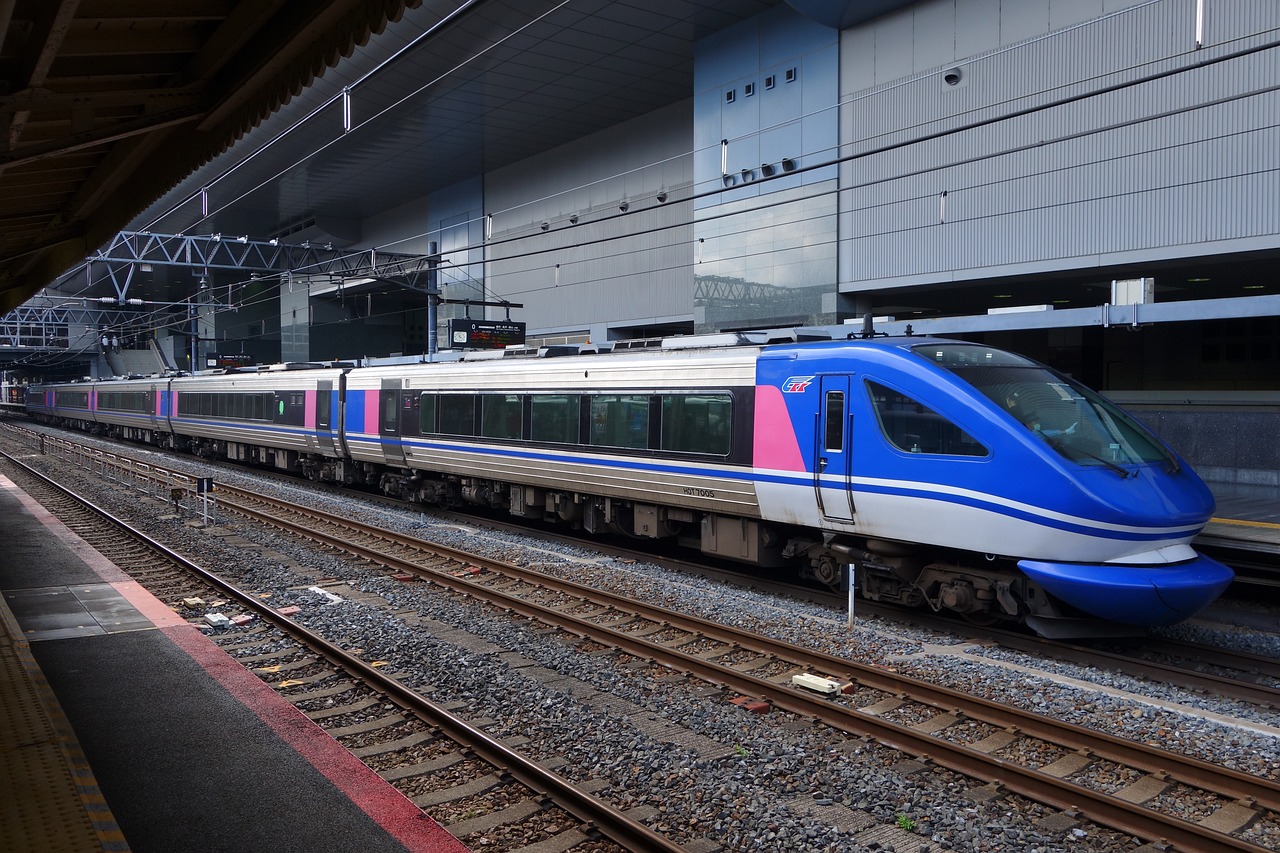
Economic Benefits of Public Transport
When we think about the benefits of public transport, our minds often drift towards environmental advantages or social equity. However, the economic benefits are equally significant and deserve our attention. Investing in public transportation systems can be a game-changer for local economies, creating jobs, reducing individual transportation costs, and even enhancing property values in nearby areas. Imagine a bustling city where residents can easily access jobs, schools, and essential services without the burden of high car ownership costs. Sounds appealing, right? Let's dive deeper into the economic impact of public transport.
First off, one of the most compelling reasons to support public transport is the cost savings for commuters. By utilizing buses, trains, and subways, individuals can save a considerable amount of money that would otherwise go towards fuel, maintenance, and parking fees associated with private vehicles. According to various studies, the average commuter can save over $10,000 a year by opting for public transport instead of driving. Think about what you could do with that extra cash! It could go towards savings, vacations, or even just enjoying a few more dinners out.
Now, let’s compare the financial implications of public transport versus private vehicle ownership. A recent analysis revealed that the total cost of owning a car—including purchase price, insurance, fuel, maintenance, and parking—can easily exceed $9,000 annually. In contrast, a monthly public transport pass typically costs around $100, leading to significant annual savings. Here’s a quick breakdown in a table format:
| Expense Category | Private Vehicle | Public Transport |
|---|---|---|
| Annual Costs | $9,000+ | $1,200 (approx.) |
| Fuel Costs | $1,500 | N/A |
| Maintenance Costs | $1,000 | N/A |
| Parking Costs | $1,200 | N/A |
As you can see, the financial benefits of using public transport are clear. But it’s not just about individual savings; the ripple effects of public transport investments extend to the community as a whole. Job creation is another crucial aspect of expanding public transport networks. When cities invest in public transit, they also create numerous job opportunities in construction, operations, and maintenance. This can lead to a boom in local employment, as skilled workers are needed to build new transit lines and maintain existing infrastructure. Moreover, the jobs created tend to be stable and well-paying, which is a win-win for communities.
In addition to job creation, expanding public transport can stimulate local economies by increasing access to businesses. When people can easily reach shops, restaurants, and services via public transport, it boosts foot traffic and sales for local businesses. Studies show that areas near public transport hubs experience a rise in property values, as more people seek to live close to convenient transport options. This not only benefits homeowners but also increases tax revenues for local governments, which can then be reinvested into community services and infrastructure.
Finally, let’s touch on funding and investment opportunities for public transport systems. Various funding sources, including federal grants, state budgets, and public-private partnerships, can enhance the efficiency and accessibility of transit systems. By exploring innovative financial models, cities can develop sustainable transport solutions that meet the needs of their growing populations. This investment is not just about improving transport; it’s about fostering a thriving economy and enhancing the quality of life for all residents.
- How does public transport contribute to job creation?
Public transport expansion creates jobs in construction, operations, and maintenance, boosting local employment opportunities. - What are the financial benefits of using public transport?
Commuters save significantly on fuel, maintenance, and parking costs, leading to potential annual savings of over $10,000. - How does public transport impact local economies?
Increased access to businesses boosts foot traffic and sales, while also raising property values in areas near transit hubs. - What funding sources are available for public transport development?
Funding can come from federal grants, state budgets, and public-private partnerships aimed at enhancing transit systems.

Cost Savings for Commuters
When it comes to commuting, one of the most significant advantages of using public transport is the cost savings it offers. Have you ever calculated how much you spend on your car each month? Between fuel, maintenance, insurance, and parking, owning a vehicle can feel like a never-ending financial drain. In contrast, public transport provides a much more affordable alternative that can help you keep more money in your pocket.
Let’s break it down. On average, a commuter using public transport can save hundreds, if not thousands, of dollars each year. For instance, consider the following expenses associated with private vehicle ownership:
| Expense | Annual Cost |
|---|---|
| Fuel | $1,200 |
| Insurance | $1,000 |
| Maintenance | $500 |
| Parking | $600 |
| Total | $3,400 |
Now, compare that to a monthly public transport pass, which can cost anywhere from $70 to $120 depending on your city. Over a year, that’s just $840 to $1,440. The savings are clear! Not only do you save on direct costs, but you also avoid the hidden expenses of car ownership, such as unexpected repairs and depreciation.
Moreover, using public transport can significantly reduce your carbon footprint. Think about it: fewer cars on the road mean less traffic congestion and lower emissions. This not only contributes to a healthier environment but also enhances your community's overall quality of life. By choosing public transport, you’re not just saving money; you're also making a positive impact on the planet.
Many commuters find that using public transport can also lead to time savings. While it might seem counterintuitive, public transport can often offer a quicker route to your destination, especially during peak traffic hours. Imagine sitting back and relaxing on a train or bus, freeing up your time to read, listen to music, or even catch up on work. Isn’t that a much better use of your commute?
In conclusion, the financial benefits of public transport are undeniable. From lower direct costs to the added perks of time and environmental savings, switching to public transport can transform your commuting experience. So, why not give it a try? You may be surprised at how much you can save while contributing to a more sustainable future.
- How much can I save by using public transport?
On average, commuters can save between $2,000 to $3,000 annually by switching from a private vehicle to public transport, factoring in all associated costs.
- Is public transport really more environmentally friendly?
Yes! Public transport reduces greenhouse gas emissions significantly compared to individual car use, making it a greener choice for commuting.
- Are public transport systems accessible for everyone?
Most modern public transport systems strive for inclusivity, providing services that accommodate people with disabilities and offering affordable options for low-income communities.
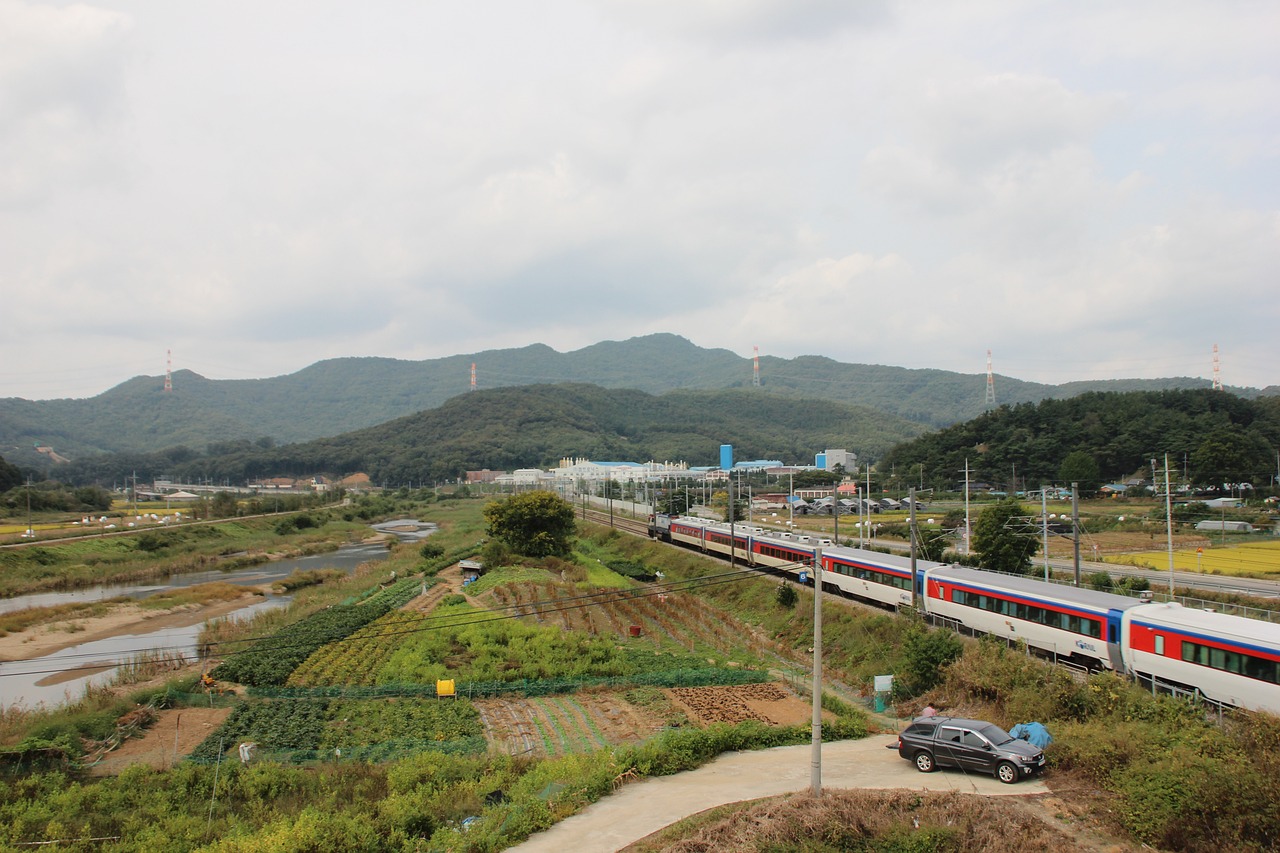
Public Transport vs. Private Vehicles
When it comes to commuting, the age-old debate between public transport and private vehicles rages on. It’s like comparing apples to oranges, but let’s break it down. First off, let’s talk about the cost. Owning a private vehicle can feel like a financial black hole. You’ve got the initial purchase price, insurance, maintenance, fuel, and let’s not forget about parking fees. On the flip side, public transport offers a more budget-friendly alternative. For instance, a monthly pass for public transit often costs significantly less than fueling and maintaining a car.
To illustrate this, consider the following table that compares the average monthly costs associated with both options:
| Expense Type | Public Transport | Private Vehicle |
|---|---|---|
| Monthly Pass | $70 | N/A |
| Fuel | N/A | $150 |
| Insurance | N/A | $100 |
| Maintenance | N/A | $50 |
| Parking | N/A | $75 |
| Total Monthly Cost | $70 | $375 |
As you can see, the financial implications are pretty clear. But it’s not just about the money; it’s also about the environment. Public transport systems are designed to carry multiple passengers at once, which means fewer cars on the road, leading to reduced traffic congestion and lower greenhouse gas emissions. Imagine a bustling city where instead of a sea of individual cars, you have efficient buses and trains whisking people to their destinations. It’s a cleaner, greener picture.
Now, let’s talk about flexibility and convenience. Many people argue that private vehicles offer unmatched convenience, and while that’s true to an extent, public transport is catching up. With the advent of apps and real-time tracking, knowing when the next bus or train is arriving has never been easier. Plus, think about the stress of driving in traffic or searching for a parking spot. Public transport allows you to sit back, relax, and maybe even read a book or catch up on your favorite show during your commute.
In terms of social impact, public transport is a game changer. It connects communities and provides mobility options for those who may not have access to a car, including students, elderly individuals, and low-income families. This inclusivity fosters a sense of community and ensures everyone has access to essential services, jobs, and social opportunities.
In conclusion, while both public transport and private vehicles have their merits, the scales tip in favor of public transport when considering cost-effectiveness, environmental sustainability, and social equity. It’s time to rethink our commuting choices and embrace the potential of public transport to create a more sustainable future.
- What are the main benefits of using public transport? Public transport reduces costs, lowers environmental impact, and promotes social equity.
- Is public transport safe? Yes, public transport systems are generally safe, with strict regulations and monitoring in place.
- How can I find the best public transport options in my area? Use local transit apps or websites to check schedules, routes, and fares.
- Are there any downsides to public transport? Some may find it less convenient or slower compared to driving, especially in less populated areas.

Funding and Investment Opportunities
When it comes to boosting our public transport systems, the question often arises: where does the funding come from? Understanding the financial landscape behind public transport is essential for anyone who wants to see improvements in their commuting experience. Various funding sources can be tapped into to enhance the efficiency and accessibility of public transport networks. These sources can range from government grants and subsidies to private investments and public-private partnerships.
One of the most significant avenues for funding public transport is through government initiatives. Many local, state, and federal governments recognize the importance of sustainable transport and allocate budgets specifically for this purpose. For example, in the United States, the Federal Transit Administration provides grants to support public transport systems, which can cover everything from infrastructure improvements to operational costs. Additionally, transportation bonds can be issued to raise capital for large projects, allowing cities to invest in much-needed upgrades.
Private investments also play a crucial role in funding public transport. Companies often see the value in supporting transport initiatives that can lead to increased foot traffic and economic growth. For instance, tech firms might invest in smart ticketing systems or apps that enhance the user experience. Furthermore, public-private partnerships (PPPs) can facilitate the sharing of resources and expertise between the public sector and private investors, leading to more innovative and efficient transport solutions. These partnerships can help spread the financial risk while improving service delivery.
Moreover, cities can explore alternative funding models such as congestion pricing or value capture financing. Congestion pricing involves charging drivers a fee to enter busy urban areas, which can discourage car use and generate revenue for public transport. Value capture financing allows municipalities to capture the increase in property values that result from improved transport infrastructure, using those funds to reinvest in the system. These innovative approaches not only support public transport but also encourage sustainable urban development.
To summarize, funding and investment opportunities for public transport are diverse and multifaceted. By leveraging a combination of government support, private investment, and innovative financing models, cities can create robust public transport systems that benefit everyone. The key is to recognize the importance of these investments and advocate for policies that prioritize sustainable commuting options.
- What are the main sources of funding for public transport? Funding can come from government grants, private investments, bonds, and innovative financing models like congestion pricing.
- How do public-private partnerships work? PPPs involve collaboration between government entities and private companies to share resources and expertise for public transport projects.
- Can alternative funding models be effective? Yes, models like value capture financing and congestion pricing can generate significant revenue while promoting sustainable transport use.
- Why is investing in public transport important? Investing in public transport reduces traffic congestion, lowers emissions, and promotes economic growth and social equity.

Job Creation through Public Transport Expansion
When we think about public transport, we often focus on its environmental benefits or how it helps us get from point A to point B. However, one of the most significant yet often overlooked aspects is the job creation potential that comes with expanding these systems. As cities invest in public transport networks, they don't just enhance mobility; they also create a ripple effect that boosts employment across various sectors. Imagine a bustling city where new bus routes or train lines lead to a surge in job opportunities—this is the reality that effective public transport expansion can bring.
Firstly, the construction phase of public transport projects alone generates a wealth of jobs. From engineers to laborers, the demand for skilled and unskilled workers skyrockets. For instance, a project to build a new subway line can create thousands of jobs, not only during the construction phase but also in the long-term operation and maintenance of the system. This is particularly important in urban areas where unemployment rates can be high. Providing jobs in these communities helps to stimulate local economies, reduce poverty, and improve overall quality of life.
Moreover, once these transport systems are operational, they require ongoing staffing for various roles, including operators, maintenance personnel, and administrative staff. For example, a new bus service might need drivers, mechanics, and customer service representatives. This ongoing demand for workers means that public transport expansion can lead to stable, long-term employment opportunities for individuals from diverse backgrounds.
To give you a clearer picture, let's look at a hypothetical scenario where a city decides to invest in its public transport system:
| Phase of Expansion | Estimated Job Creation |
|---|---|
| Construction | 2,000 jobs |
| Operations | 500 jobs |
| Maintenance | 300 jobs |
| Administrative | 200 jobs |
This table illustrates just a fraction of the employment opportunities that can arise from a single public transport expansion project. The benefits extend beyond just numbers; they represent real people gaining employment, which can lead to enhanced community stability and growth.
Furthermore, investing in public transport can also spur job creation in related sectors. For example, increased accessibility can lead to more foot traffic in local businesses, which can create jobs in retail, hospitality, and services. It’s a win-win situation where the community thrives, and local businesses flourish due to improved transport links.
In conclusion, the expansion of public transport networks is not just about improving infrastructure; it’s about creating a multitude of job opportunities that can transform the economic landscape of a city. By recognizing the extensive benefits of public transport, we can advocate for policies that not only enhance our commuting experience but also foster economic growth and community well-being.
- How does public transport create jobs?
Public transport creates jobs through construction, operation, and maintenance of transport systems, as well as by stimulating local economies. - What types of jobs are generated by public transport expansion?
Jobs can range from construction workers and engineers to bus drivers and administrative staff. - Can public transport improve local economies?
Yes, by increasing accessibility, public transport can lead to higher foot traffic in local businesses, creating additional job opportunities.
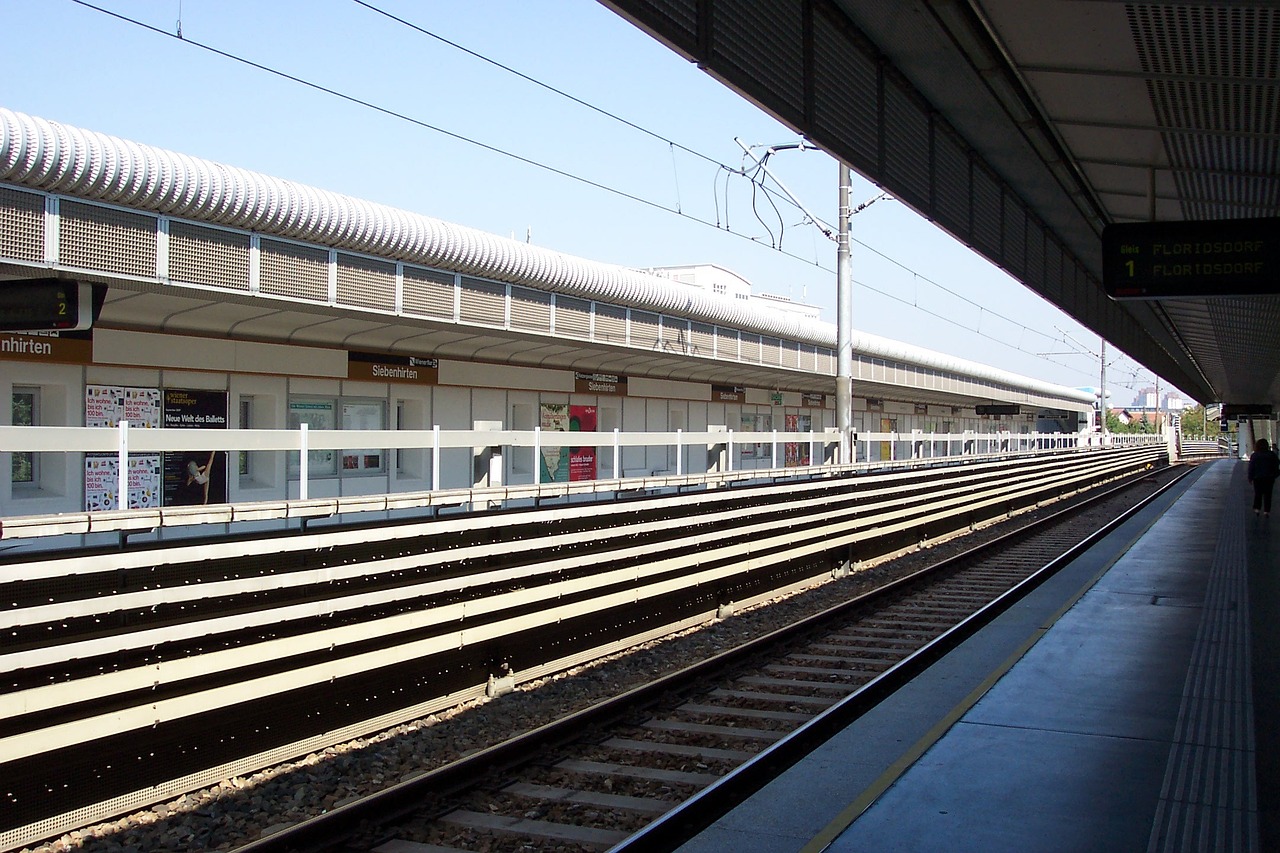
Social Benefits of Public Transport
Public transport is more than just a means to get from point A to point B; it serves as a lifeline for many communities, fostering social equity and accessibility. Imagine a bustling city where everyone, regardless of their economic status, has the ability to travel freely and engage with their surroundings. This is the reality that public transport helps create. By offering affordable commuting options, public transport ensures that low-income individuals and families can access essential services such as healthcare, education, and employment opportunities, which might otherwise be out of reach.
Moreover, public transport plays a crucial role in promoting inclusivity. It’s not just about getting people to work or school; it’s about ensuring that everyone, including those with disabilities, can navigate the urban landscape. Designing transport systems that are accessible to all is vital. This includes features like low-floor buses, ramps, and audio-visual announcements that cater to the needs of individuals with mobility challenges. When public transport is designed with everyone in mind, it sends a powerful message: that every member of the community deserves the right to move freely.
Additionally, public transport enhances community engagement by connecting neighborhoods and facilitating social interactions. Think about it: when people ride the bus or train, they are not just commuting; they are sharing experiences, exchanging stories, and building connections. This fosters a sense of community and belonging, making urban areas more vibrant and cohesive. Public transport systems can also serve as venues for local events, like farmers' markets or art exhibitions, bringing people together and promoting local culture. The more accessible public transport is, the more opportunities there are for individuals to engage with their community.
To illustrate the social benefits further, here’s a quick comparison of communities with robust public transport systems versus those without:
| Aspect | Communities with Public Transport | Communities without Public Transport |
|---|---|---|
| Access to Employment | High accessibility to jobs for low-income residents | Limited access, often leading to higher unemployment rates |
| Social Interaction | Increased opportunities for socializing and community events | Isolation due to lack of mobility options |
| Inclusivity | Accessible for all demographics, including disabled individuals | Exclusion of certain groups, limiting their mobility |
In conclusion, the social benefits of public transport are far-reaching and transformative. By promoting accessibility and fostering community engagement, public transport not only enhances individual lives but also strengthens the fabric of society as a whole. It’s a vital component in creating sustainable urban environments where everyone can thrive. So, the next time you hop on a bus or train, remember that you’re not just commuting; you’re contributing to a larger movement towards a more inclusive and connected community.
- How does public transport promote social equity? Public transport provides affordable mobility options for low-income individuals, allowing them access to essential services and job opportunities.
- What are some examples of accessible public transport features? Features include low-floor buses, ramps, audio announcements, and designated seating for individuals with disabilities.
- Can public transport help strengthen community ties? Yes, by connecting neighborhoods and facilitating social interactions, public transport fosters a sense of community and belonging.
- Why is community engagement important in public transport? Community engagement ensures that transport systems meet the needs of all residents, enhancing overall accessibility and inclusivity.
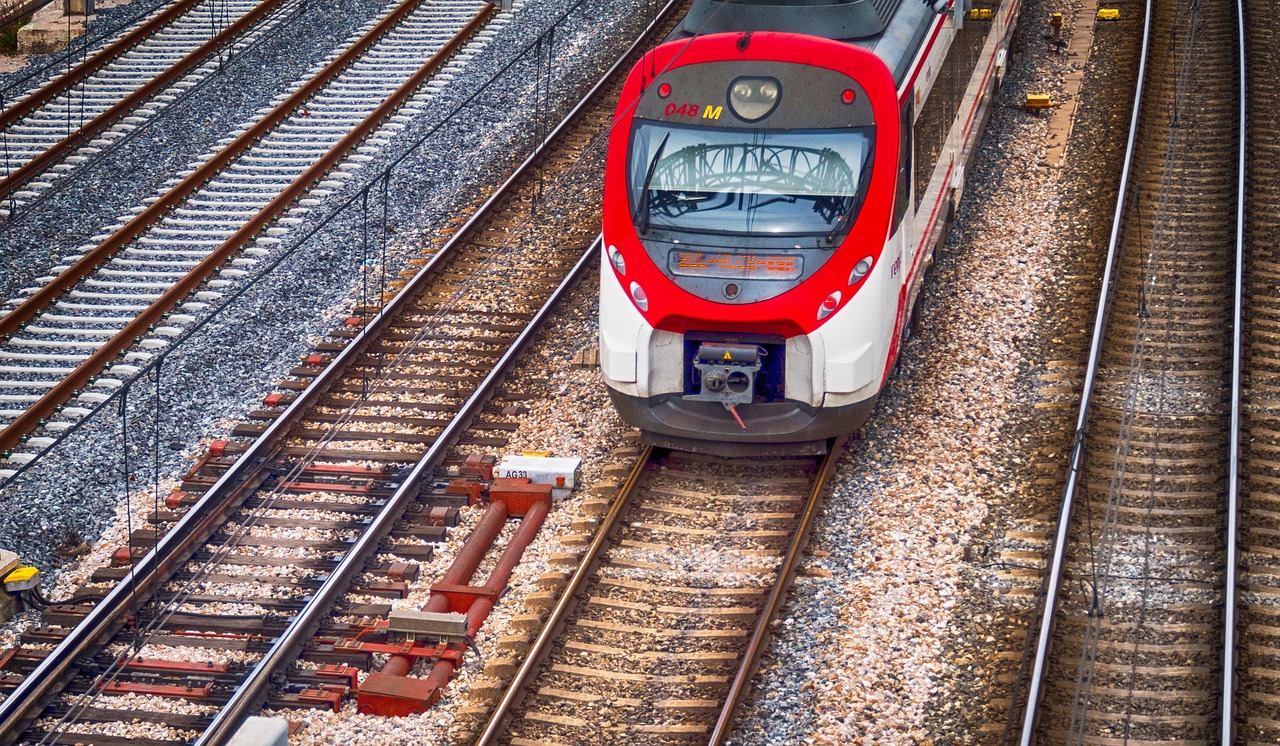
Accessibility for All
When we talk about public transport, one of the most crucial aspects that often gets overlooked is accessibility. Imagine a world where everyone, regardless of their physical abilities, can hop on a bus or train without a second thought. It’s not just a dream; it’s a necessity. Public transport systems must be designed with inclusivity in mind, ensuring that individuals with disabilities can navigate their cities just as easily as anyone else. This means implementing features like low-floor buses, elevators in subway stations, and audible announcements to guide passengers. When these elements come together, they create an environment where mobility is a right, not a privilege.
Accessibility isn’t just about physical features; it’s about creating a culture of inclusivity. For instance, consider the following essential components that make public transport truly accessible:
- Wheelchair Ramps: Every bus and train should have ramps or lifts that allow easy access for wheelchair users.
- Signage and Information: Clear, easy-to-read signs and real-time updates help everyone, especially those with visual impairments.
- Training for Staff: Conducting regular training for transport staff on how to assist passengers with disabilities can make a significant difference.
In addition to these features, it's vital to gather feedback from disabled individuals to continuously improve services. Public transport authorities should actively engage with communities to understand their needs and preferences. By doing so, they can create a more user-friendly environment that encourages more people to utilize public transport. This not only enhances the quality of life for those with disabilities but also fosters a sense of belonging within the community.
Furthermore, the economic aspect of accessible public transport cannot be ignored. When transport systems are inclusive, they open up job opportunities for disabled individuals, allowing them to contribute to the economy. This, in turn, creates a more vibrant community where everyone has a stake in its success. The ripple effect of a well-designed, accessible transport system can lead to greater social equity and a stronger sense of community. After all, when we ensure that everyone can easily access public transport, we pave the way for a more inclusive society.
Q: Why is accessibility in public transport important?
A: Accessibility ensures that all individuals, regardless of their physical abilities, can utilize public transport. It promotes inclusivity and equal opportunities for everyone.
Q: What features should be included in an accessible public transport system?
A: Key features include low-floor buses, elevators in stations, clear signage, audible announcements, and trained staff to assist passengers with disabilities.
Q: How can communities contribute to making public transport more accessible?
A: Communities can provide feedback to transport authorities, participate in discussions, and advocate for the needs of disabled individuals to ensure that their voices are heard in the planning process.
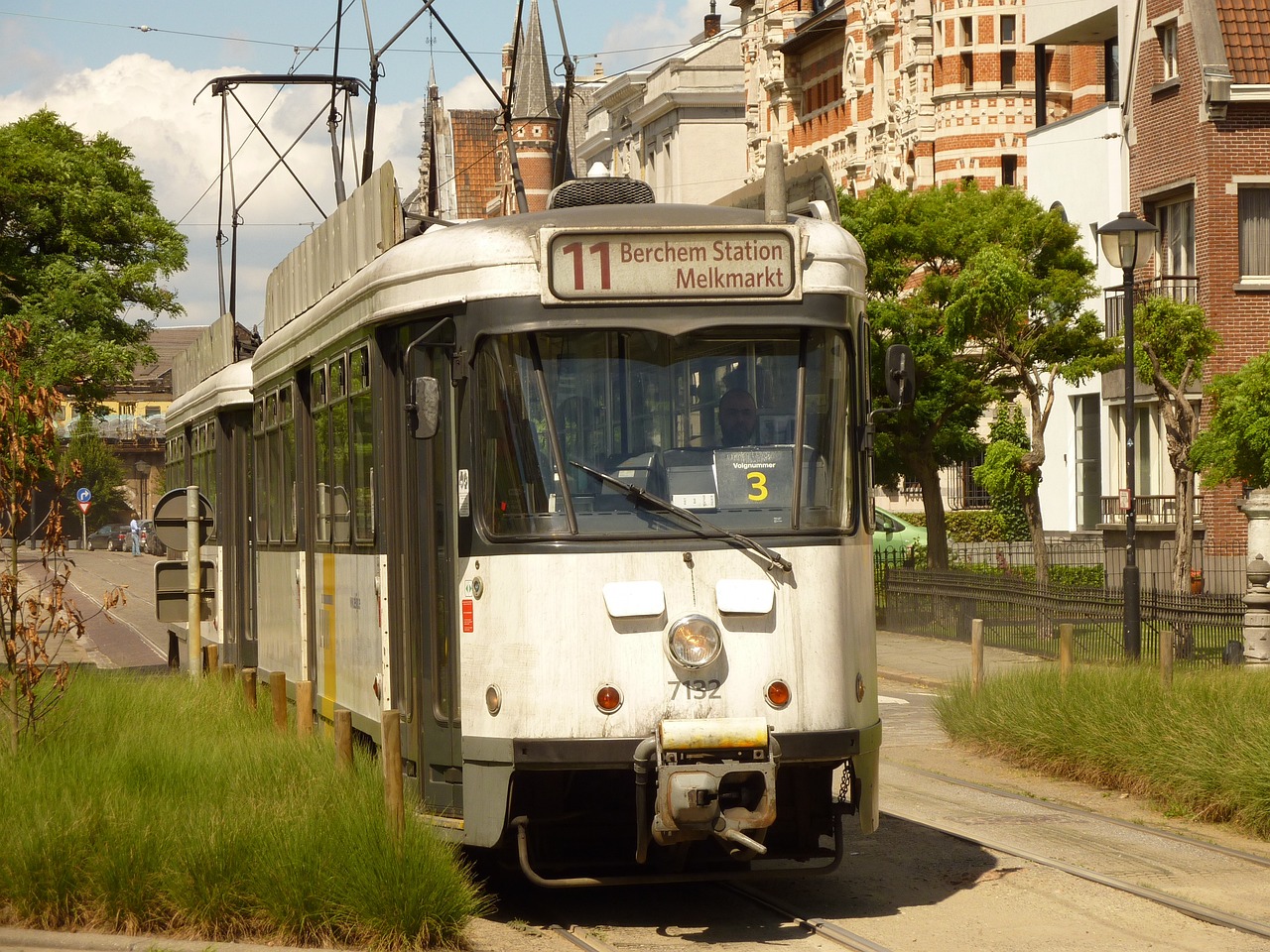
Community Engagement and Development
Public transport is more than just a means of getting from point A to point B; it acts as a vital thread that weaves together the fabric of our communities. Imagine hopping on a bus or train and finding yourself not just in a different location, but immersed in a melting pot of cultures, ideas, and stories. This connectivity fosters a sense of belonging and promotes social interactions, making public transport an essential tool for community engagement and development.
When we consider the impact of public transport on community cohesion, it’s clear that it goes beyond mere logistics. It enhances accessibility, allowing residents to easily reach local businesses, educational institutions, and recreational areas. This accessibility is particularly crucial for individuals who may not own a vehicle or who face mobility challenges. By providing reliable transport options, we empower all community members to participate in social and economic activities, thereby enriching the community as a whole.
Furthermore, public transport systems can serve as platforms for community development initiatives. For instance, local governments and organizations can collaborate to create events or programs that encourage residents to explore their neighborhoods via public transport. These initiatives can include:
- Community Days: Special events where residents are encouraged to use public transport to visit local attractions.
- Public Art Projects: Collaborations with local artists to create murals or installations at transport hubs, making them vibrant community spaces.
- Workshops and Classes: Educational programs that teach residents about the benefits of public transport and how to navigate the system effectively.
Moreover, the design and planning of public transport systems can actively involve community input. Engaging residents in the decision-making process not only ensures that the transport services meet their needs but also fosters a sense of ownership and pride within the community. Public forums, surveys, and workshops can be instrumental in gathering feedback and ideas from the community, ultimately leading to a transport system that reflects the values and aspirations of its users.
In conclusion, public transport plays a crucial role in community engagement and development. By enhancing accessibility, fostering social interactions, and involving residents in the planning process, public transport systems can transform neighborhoods into vibrant, interconnected spaces. It’s not just about getting around; it’s about building a community where everyone feels included and empowered to contribute.
Q1: How does public transport contribute to community engagement?
Public transport connects different neighborhoods, allowing residents to interact and engage with each other, which fosters a sense of community and belonging.
Q2: What are some examples of community-focused public transport initiatives?
Examples include community days to encourage transport use, public art projects at transport hubs, and workshops that educate residents on navigating the public transport system.
Q3: How can residents get involved in the planning of public transport systems?
Residents can participate in public forums, provide feedback through surveys, and attend workshops organized by local governments or transport authorities to share their ideas and needs.
Q4: Why is accessibility important in public transport?
Accessibility ensures that all community members, including those with disabilities or without access to private vehicles, can use public transport, promoting inclusivity and equal opportunities.
Frequently Asked Questions
- What are the environmental benefits of using public transport?
Public transport plays a crucial role in reducing greenhouse gas emissions, which helps in combating climate change. By opting for buses, trains, and trams instead of private vehicles, we can significantly lower the amount of pollution in urban areas. This leads to cleaner air and a healthier environment for everyone.
- How does public transport contribute to economic growth?
Investing in public transportation systems can stimulate local economies by creating jobs and reducing transportation costs for individuals. When people have access to reliable public transport, they can more easily reach employment opportunities, which in turn boosts economic activity in the area.
- What are the cost savings associated with using public transport?
Utilizing public transport can lead to substantial savings on fuel, maintenance, and parking costs. For many commuters, these savings can add up to hundreds of dollars each month, freeing up money for other essential expenses or leisure activities.
- How does public transport promote social equity?
Public transport provides mobility options for all demographics, including low-income individuals and those without access to private vehicles. This inclusivity ensures that everyone has the opportunity to participate in society, access jobs, and engage in community activities.
- What steps are being taken to make public transport accessible for people with disabilities?
Many public transport systems are actively working to improve accessibility by incorporating features like low-floor buses, elevators in train stations, and audio-visual announcements. These enhancements are vital for ensuring that everyone can use public transport without barriers.
- How can public transport strengthen community ties?
Public transport fosters community cohesion by connecting neighborhoods and facilitating social interactions. When people can easily travel from one area to another, it promotes engagement and strengthens the bonds between residents, leading to a more vibrant community.



















